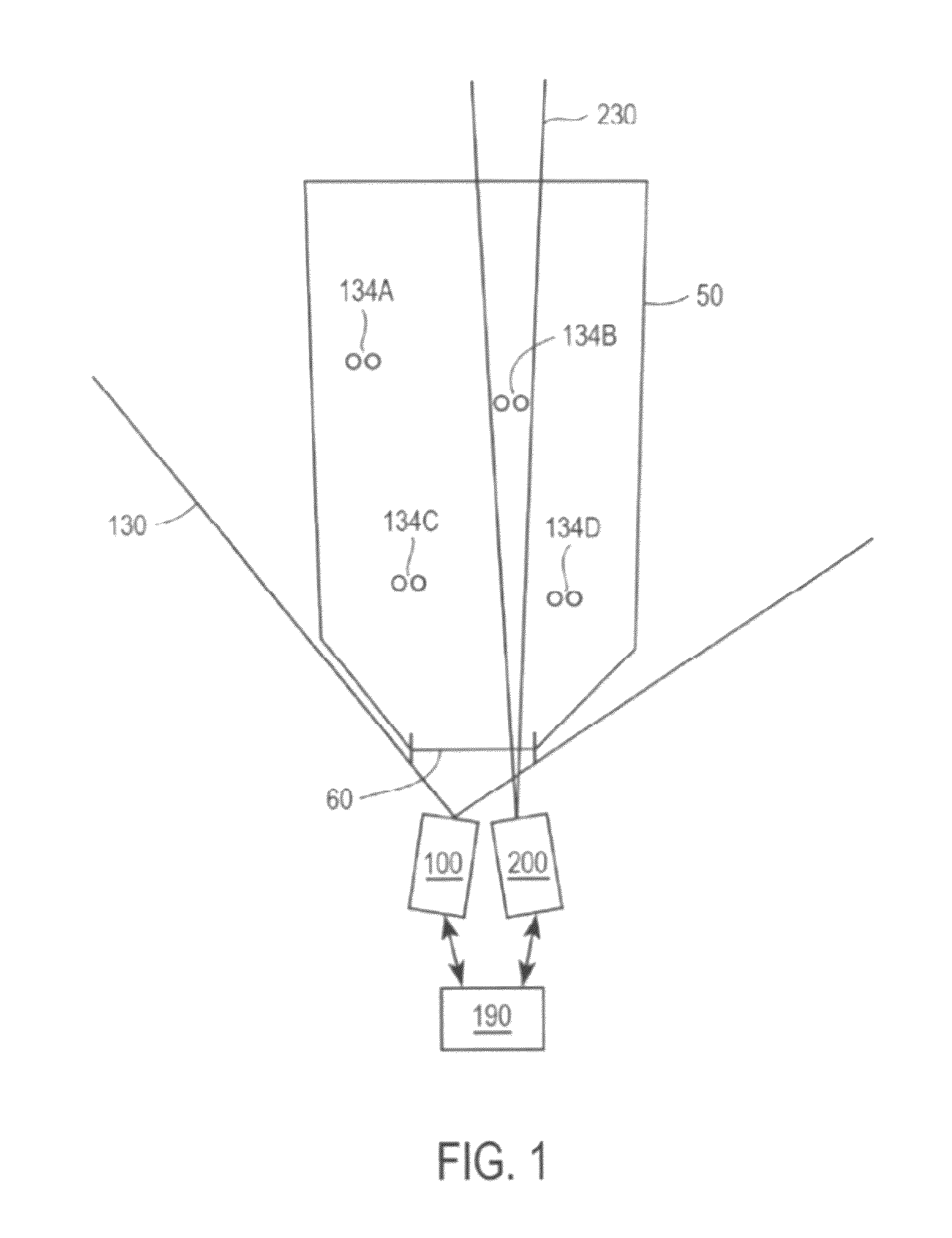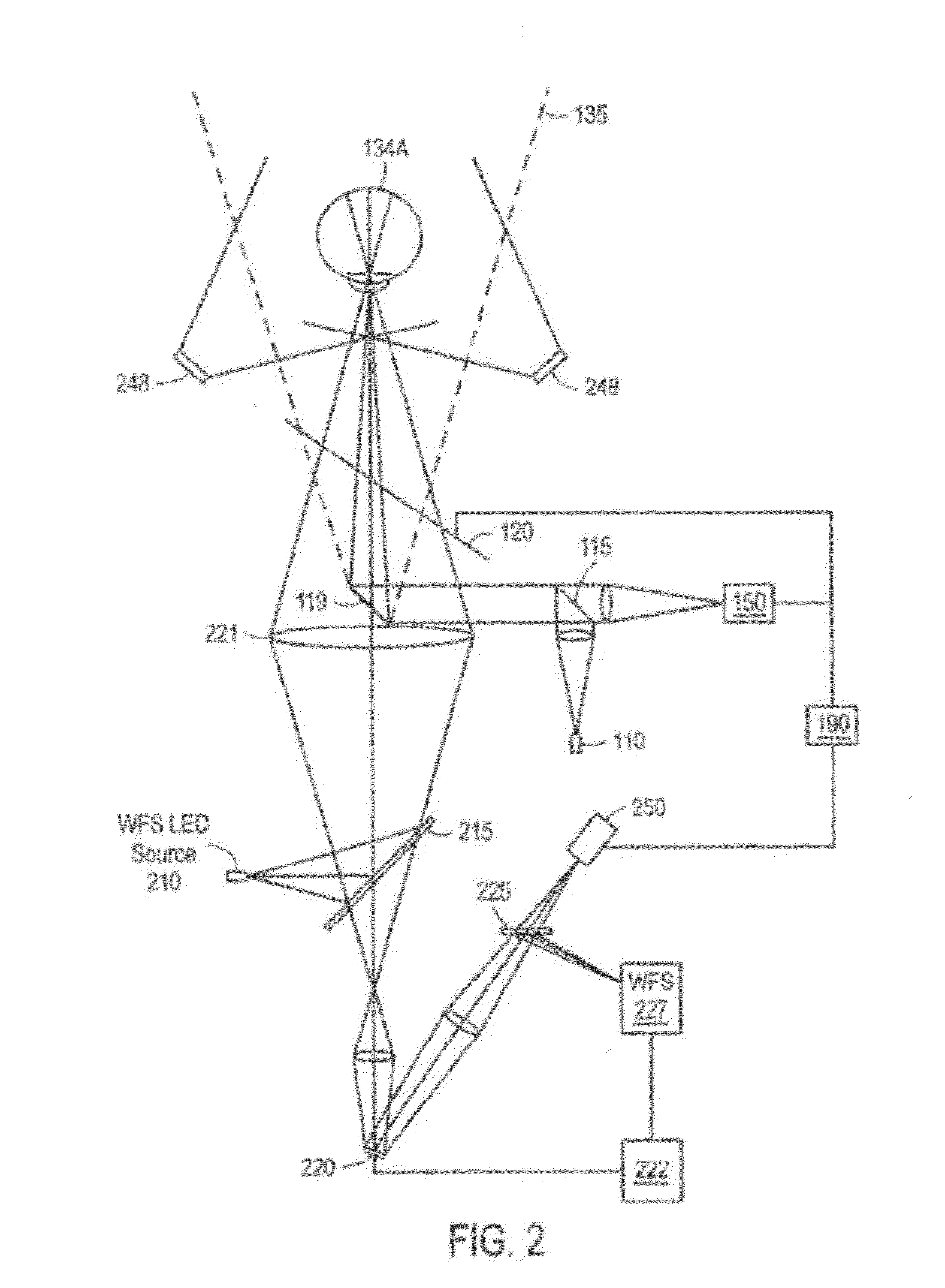Scale-invariant, resolution-invariant iris imaging using reflection from the eye
a iris imaging and scale-invariant technology, applied in the field of imaging systems, can solve the problems of system that is not, still has reduced etc., and achieve the effect of reducing sensitivity to object distan
- Summary
- Abstract
- Description
- Claims
- Application Information
AI Technical Summary
Benefits of technology
Problems solved by technology
Method used
Image
Examples
Embodiment Construction
[0027]FIG. 1 is an illustration of an iris imaging system. The iris imaging system includes an imaging subsystem 200 and, optionally, an acquisition subsystem 100. The system is designed to capture iris images of many eyes 134 over a large capture volume 50, typically with minimal cooperation, or possibly without the active cooperation of the subjects. In one application, the subjects are passing through a portal 60 (such as a doorway or metal detector), the capture volume 50 is the entranceway leading up to the portal, and the iris imaging system captures iris images as the subjects pass through the capture volume. Typically in such a scenario the user would be requested to briefly stop in the capture volume to scan a card, wait for access doors to open, or wait for a signal from a guard or from an indicator screen. In many applications, the capture volume can be defined based on a portal or other bottleneck for the flow of people. Examples include corridors, turnstiles, toll booth...
PUM
 Login to View More
Login to View More Abstract
Description
Claims
Application Information
 Login to View More
Login to View More - R&D
- Intellectual Property
- Life Sciences
- Materials
- Tech Scout
- Unparalleled Data Quality
- Higher Quality Content
- 60% Fewer Hallucinations
Browse by: Latest US Patents, China's latest patents, Technical Efficacy Thesaurus, Application Domain, Technology Topic, Popular Technical Reports.
© 2025 PatSnap. All rights reserved.Legal|Privacy policy|Modern Slavery Act Transparency Statement|Sitemap|About US| Contact US: help@patsnap.com



